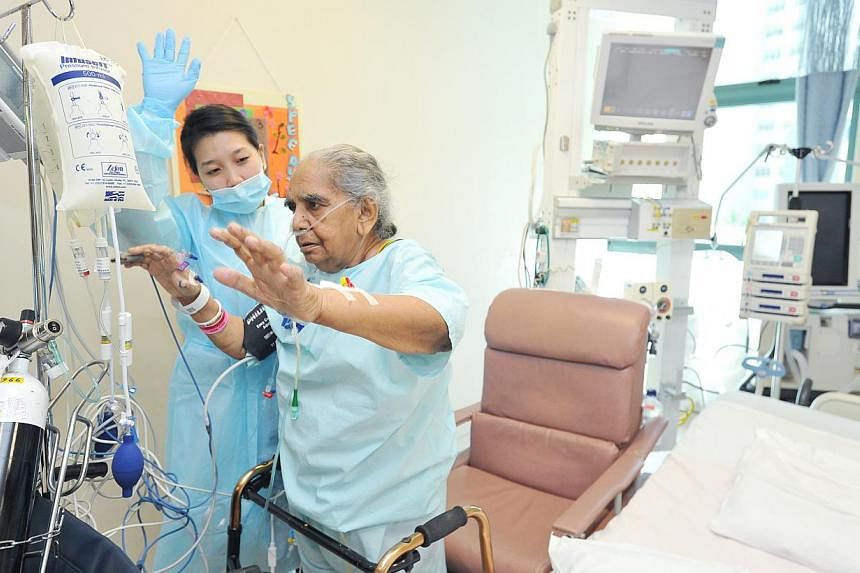You would think that the last thing patients in intensive care need is exercise.
And while this is true in some cases, a team from Tan Tock Seng Hospital (TTSH) has found that starting suitable patients on simple exercises can help them get out of the intensive care unit (ICU) earlier.
The average length of stay for such patients at its surgical intensive care unit (SICU) fell from three days to two after staff started them on physiotherapy as soon as possible. Patients also had higher potential for rehabilitation to regain mobility.
"The traditional impression of ICU patients is of them lying in bed to recuperate," said TTSH principal physiotherapist Jayachandran Balachandran. "But for each day he lies in bed, he loses 2 per cent of his muscles."
"Patients in ICU may be frail but helping them to move early ensures that they do not waste away in bed," he added.
More tests need to be done to ascertain the findings as the study involved only 75 patients, said Mr Balachandran. But the results are similar to studies in the United States, he added.
Most of the hospital's SICU patients who can benefit from early physiotherapy now start as soon as medically possible. But it was not always this way.
"When we started in 2012, it was hard to get buy-in as doctors and nurses were not used to the concept," said Mr Balachandran.
"But we showed them medical literature proving that it has worked elsewhere. Some nurses also pushed for it as they saw how it helped patients."
Nurses get a standard checklist to help them start the physio process. They need only to tick off the checklist and ensure the patient is conscious, has a constant blood pressure and heart rate, among many things.
A medical officer available in the ICU round the clock signs off on this form and nurses can start patients on simple exercises like getting them to sit up, and sit by the edge of the bed, for example.
If patients are stronger, nurses can help them take a few steps and sit on a chair. Physiotherapists help with more complex exercises like getting a patient to walk or march on the spot.
Singapore General Hospital (SGH) and Changi General Hospital (CGH) are also stepping up their early mobilisation programmes. These involve a team of nurses, physiotherapists, respiratory therapists and doctors.
SGH is telling its ICU staff about new processes to ensure that early physio is done consistently in its medical ICU, and it is training more physiotherapists for its ICU wards. CGH wants to survey patients on their early physio experience to improve its programmes.
SGH principal physiotherapist Ong Hwee Kuan said: "Many patients are happy to get off bed, as lying in bed for prolonged periods gives them backaches."
CGH doctor Vijo Poulose said some medical staff initially worried that ventilator tubes and central lines may get dislodged during rehab. "But this rarely happens," he said. Family members also fear that their frail loved ones are overstretched.
But doctors say that if done right, patients benefit.
TTSH patient Santokh Kaur, 77, raised her arms and walked a few steps during a recent rehab session in the ICU. "I like exercise, at least I am not drowsy and sleeping all the time... I can't wait to go home and cook dahl and roti," she said, flashing a smile.

